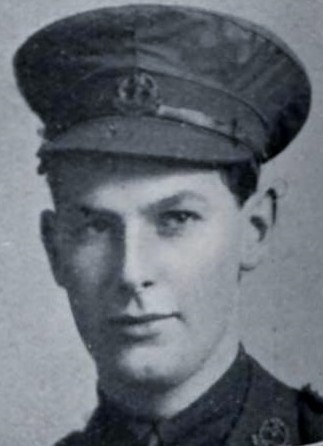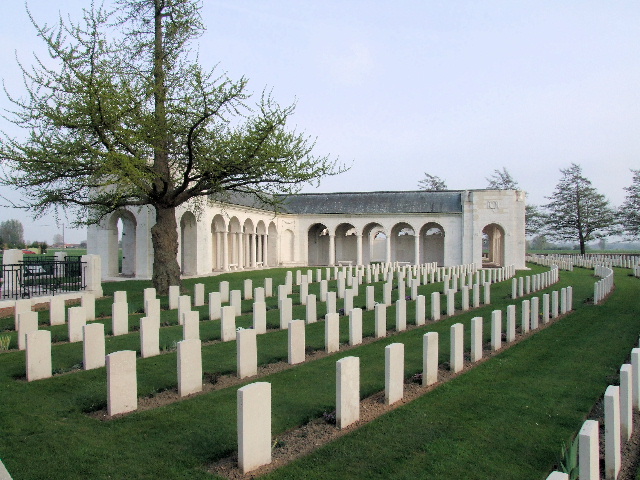Name
Wallace Bird Macfarlane
Conflict
First World War
Date of Death / Age
10/03/1915
Rank, Service Number & Service Details
Second Lieutenant
Duke of Cambridge’s Own (Middlesex Regiment)
5th Bn., attached 2nd Bn.
Awards: Service Medals/Honour Awards
Not Yet Researched
Cemetery/Memorial: Name/Reference/Country
LE TOURET MEMORIAL
Panels 31 and 32.
France
Headstone Inscription
NA
UK & Other Memorials
Standon War Memorial, St Mary’s Church Memorial, Standon, Puckeridge Memorial Plaque, Standon Village Hall, Standon
Biography
Wallace Bird Macfarlane was a 2nd Lieutenant in the 5th Battalion of the Middlesex Regiment (Duke of Cambridge’s Own) attached to 2nd Battalion.
He was killed in action on 10th March 1915 at the age of 20. His name is on Panels 31 & 32 of Le Touret Memorial, France.
An obituary in the Hertfordshire Almanac date 1st January 1916 says:
“2nd Lieutenant W. B. Macfarlane, Middlesex Regmt. who was killed in action at Neuve Chapelle, was the only son of Capt. H.H. Macfarlane of Standon”
His name also appears in the Herts & Essex Observer dated 7th August 1915 (some 5 months after he had died), as one of many Standon or Puckeridge men who ‘offered themselves for service for King and Country’ and joined up. There is some evidence that the Macfarlane family had connections with a property at Wellpond Green.
The family consisted of Wallace’s father Henry H Macfarlane, who had been described on various census returns as a Farmer or a retired Army Officer, born in Dublin. His wife Margaret Ellen was born in Norfolk, the daughter of a vicar, the Rev. J. Waller Bird – hence Wallace’s middle name. Two girls were born before Wallace arrived, Violet Laura in 1889 in Paddington and Marion Geraldine in 1893 born in Rotherfield, Sussex.
Harts Army List of 1888 gives the following information about Wallace’s father’s Army career and it must have been inevitable that Wallace should have followed in his father’s footsteps, but in what was to be a very different kind of war:
“Lieutenant Macfarlane served with the 4th Dragoon Guards in the Egyptian War of 1882, had command of the Remount Depot at the base of operations at Ismailia during September and was present in the engagement at Tel-el-Mahuta (for which he received a medal plus the Khedive’s Star).”
It is possible that the family moved to Standon after the 1911 census had been taken, or may have had a ‘country house’ for weekends and holidays, as they were a relatively wealthy family, previously living in Uckfield, Sussex, Fulham and Balham, S.W. London.
As with many other men on this memorial who died in 1915, Wallace must have enlisted quite soon after war was declared as he died very early in 1915 and was in fact the 2nd man to die from the 36 names on this memorial. His battalion was attached to the 8th Division of the 2nd Army and in spite of the carefully planned attack at Neuve Chapelle, not everything went according to plan. A brief description taken from “The Chronicles of the Great War” describes the situation:
“The short hurricane bombardment began at 7.30 on the morning of 10 March, surprising and stunning the defenders, with the result that the Indian Corps and Rawlinson’s IV Corps quickly seized the German front trenches. However, there were delays on both flanks caused, on the right, by the loss of direction of the 1/39th Garhwal Rifles and, on the left, by the failure of two recently arrived howitzer batteries to destroy a 400-yard stretch of trenches. In little over three hours, growing congestion in the centre and in the rear areas took the initial sting out of the attack, while German strongpoints behind the front line also impeded further progress. The British and Indian troops had overrun the German defences on a front of 4,000 yards, gained 1,200 yards at the deepest point, captured Neuve Chapelle and eradicated the German salient west of the village, but during the next three days they could not exploit their early success. Late on 12th March Haig ordered that the attack should be stopped and the new line consolidated. The BEF’s casualties numbered nearly 13,000 officers and men and German losses were about 12,000.”
It has been discovered recently that Wallace Macfarlane married just before being sent to France. On 19th December 1914 he married Miriam Madgen by Licence, which indicates the marriage was arranged hurriedly. Wallace gave his age on the marriage certificate as 22 but he was actually only 19. This may have been because as a ‘minor’, under 21, he should have had his parents’ permission to marry, which perhaps he did not have?
Acknowledgments
Di Vanderson, Jonty Wild



